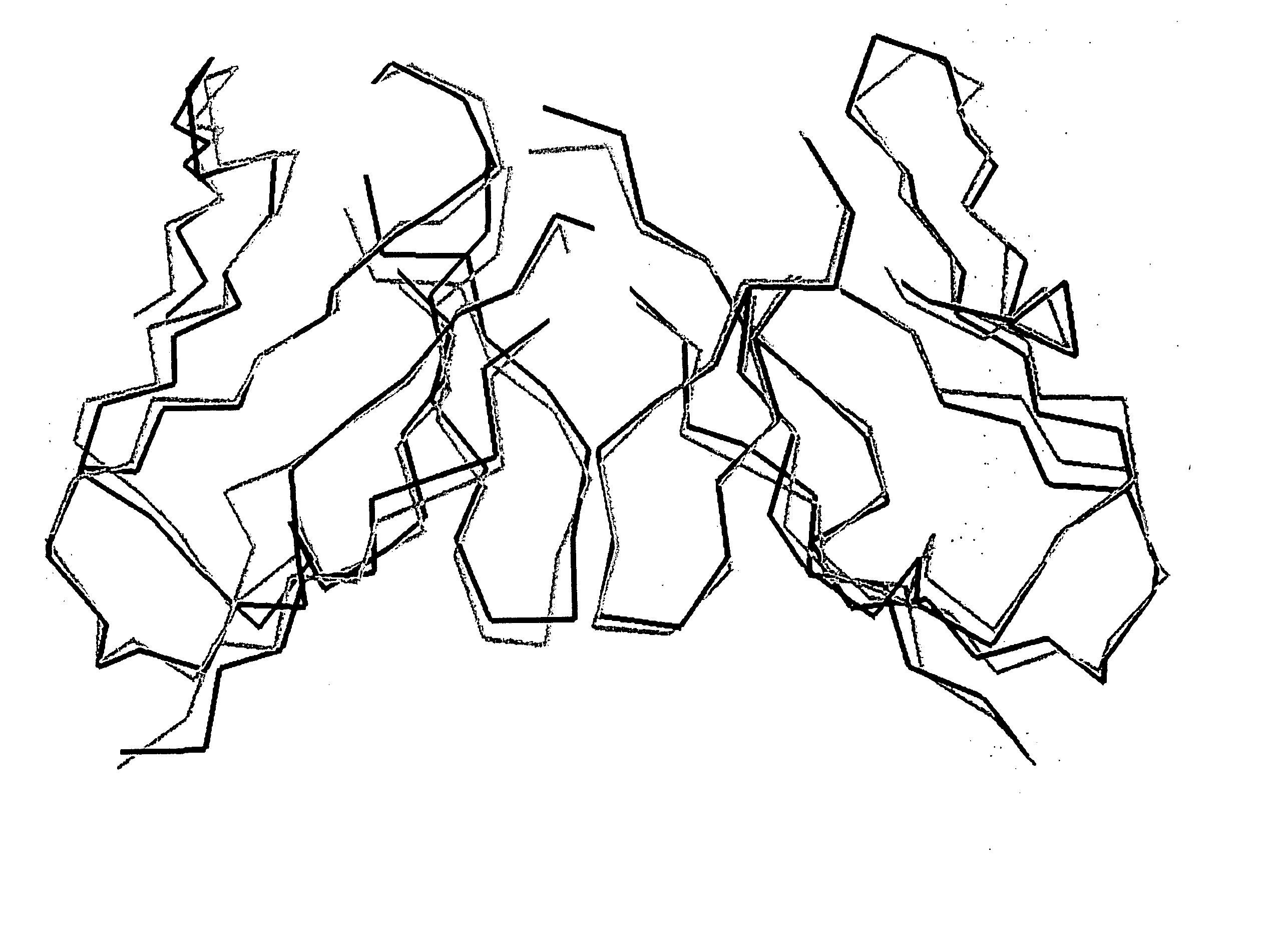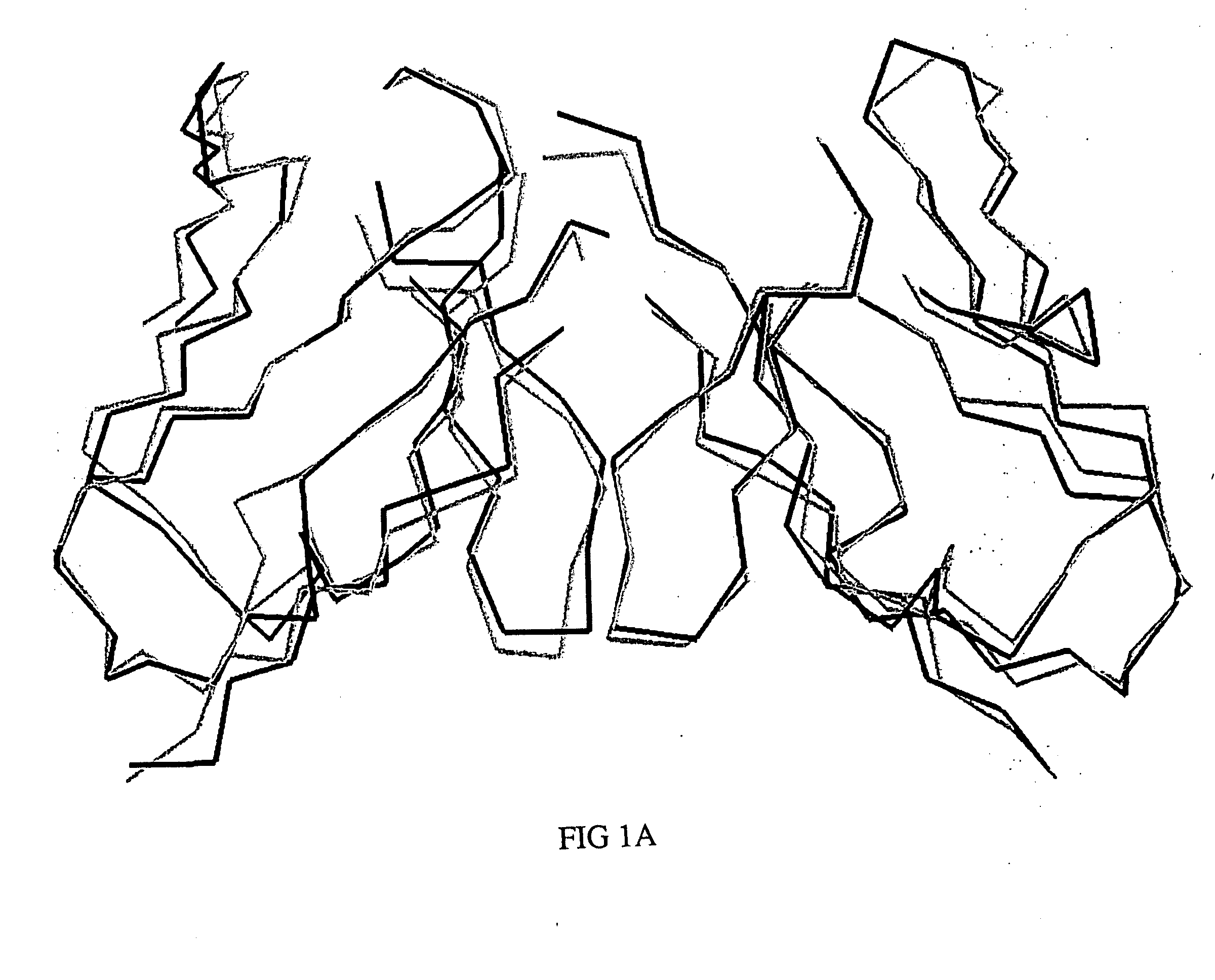Humanized Anti-cea t84.66 antibody and uses thereof
a humanized anti-cea and t84.66 technology, applied in the field of humanized anti-cea t84.66 antibody, can solve the problems of poor expression of intact antibodies in mammalian cell culture, specificity of antibodies produced by these methods, and inability to detect xenogeneic antibodies, etc., to achieve the effect of inhibiting growth
- Summary
- Abstract
- Description
- Claims
- Application Information
AI Technical Summary
Benefits of technology
Problems solved by technology
Method used
Image
Examples
example 1
Humanization of T84.66 Monoclonal Antibody
[0048] Using molecular graphics technology, X-ray coordinates for a single T84.66 Fv unit were extracted from the coordinate set of the corresponding diabody structure (PDB file 1 MOE). The T84.66 Fv coordinate set was then submitted to VAST, a web-based least-squares structural alignment server (Gibrat 1996), in order to identify a human or humanized Fv in the Protein Data Bank (Bernstein 1977; Berman 2000) whose framework would serve as a suitable acceptor for the proposed CDR graft. Of the antibodies that appeared in the list of homologous structures, humanized antibody 4D5, version 8 (anti-p185HER2, Herceptin, PDB file 1 FVC) (Eigenbrot 1993) was selected as the most appropriate framework provider for the proposed CDR graft, because the degree of overlap (root-mean-square deviation of 1.07 Å for 1,326 backbone atoms) was high and the angle of VL-VH domain pairing was essentially the same (FIGS. 1A, 1B). The amino acid sequence of the T8...
example 2
Generation of Synthetic Genes Encoding Humanized T84.66
[0053] Splice overlap extension polymerase chain reaction (SOE-PCR) (Horton 1989) was used to create fully synthetic genes encoding the M5A and M5B immunoglobulin variable region (Fv) genes. Eight oligonucleotides (Integrated DNA Technologies, Inc., Coralville, Iowa) ranging in size from 79 to 89 bases were required for each domain construct. The degree of overlap between adjacent oligonucleotides corresponded to 30 base pairs. The PCR primer sequences for the variable light (VL) and variable heavy (VH) domains are shown in SEQ ID NOs: 8-24.
[0054] Four SOE-PCR amplifications were required to build each variable domain gene. The internal-most pair of primers (4 and 5) were amplified first. The resulting PCR product was gel purified and further extended with the next set of external primers (3 and 6). The third extension utilized primers 2 and 7, and the final extension utilized primers 1 and 8. Each 50 μL reaction contained rea...
example 3
Expression and Purification of Humanized T84.66
[0055] The dual chain pEE12 / 6 expression vector was electroporated into murine myeloma NS0 cells following procedures as previously described (Bebbington 1992; Yazaki 2001). Selection of transfectants in glutamine-free culture media (JRH Biosciences, Kenexa, Ky.) resulted in numerous clones, which were screened using a recombinant CEA fragment (Young 1998) based ELISA (Yazaki 2001).
[0056] Individually, the cell culture harvests were clarified by batch treatment (5% w / v) with the anion exchanger, AG1x8 (Bio-Rad Laboratories, Hercules, Calif.). The initial small-scale purification was on a Protein A column (Procept A; Millipore, Bedford, Mass.; 0.46 cm d, 10 cm h, 2.5 ml / min) pre-equilibrated with phosphate buffered saline (PBS). The clarified harvest was loaded and washed with 20 mM sodium phosphate pH 7.4, 20 mM sodium citrate, and 0.5 M NaCl. The antibodies eluted with 10 mM sodium phosphate, pH 4.0. The Protein A eluted peak was dia...
PUM
 Login to View More
Login to View More Abstract
Description
Claims
Application Information
 Login to View More
Login to View More - R&D
- Intellectual Property
- Life Sciences
- Materials
- Tech Scout
- Unparalleled Data Quality
- Higher Quality Content
- 60% Fewer Hallucinations
Browse by: Latest US Patents, China's latest patents, Technical Efficacy Thesaurus, Application Domain, Technology Topic, Popular Technical Reports.
© 2025 PatSnap. All rights reserved.Legal|Privacy policy|Modern Slavery Act Transparency Statement|Sitemap|About US| Contact US: help@patsnap.com



